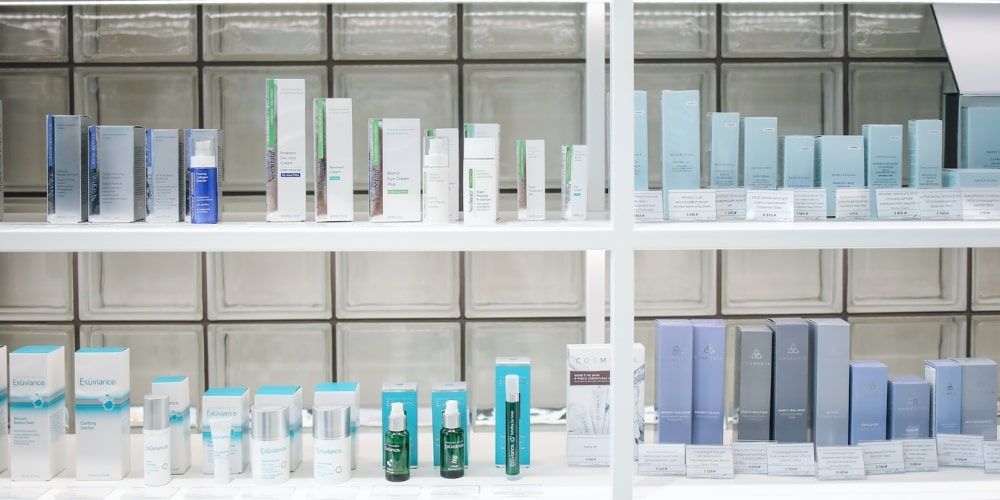In the highly competitive world of cosmetics, packaging plays a pivotal role in influencing consumer perceptions and purchasing decisions. In this article, we will discuss the effect of cosmetic packaging on consumer perceptions. All findings and data used for this post are backed by a study from CalPoly (California Polytechnic State University).

The Role of Cosmetic Packaging
Cosmetic packaging serves several crucial functions. Firstly, it acts as a magnet to attract consumers’ attention in a crowded marketplace. A visually appealing package has the power to make a product stand out among countless others on the shelf. Secondly, it effectively communicates essential product information such as ingredients, usage instructions, and expiry dates. Clear and accurate labeling helps consumers make informed choices and builds trust in the brand.
Visual Elements in Packaging
Color is one of the most influential visual elements in cosmetic packaging. Different colors evoke specific emotions and associations. For instance, soft pastels might suggest a gentle and natural product, while bold and vibrant hues can imply a more energetic or modern formulation. The shape and form of the packaging also contribute significantly. Sleek and streamlined designs often convey sophistication and modernity, while curvaceous or ornate shapes might be associated with luxury or femininity. Graphics and imagery used on the packaging play a vital role in creating a brand identity. High-quality, detailed images can enhance the perceived value of the product, while unique and artistic designs can make the package memorable.
Materials and Texture
The choice of materials used in cosmetic packaging can greatly influence consumers’ perception of quality. Premium materials like heavy glass or metal can give the impression of a high-end, luxurious product. On the other hand, lightweight plastics might be seen as more economical or disposable. The texture of the packaging, whether smooth, matte, or textured, also adds to the tactile experience. A pleasant tactile sensation can enhance the overall appeal and make the product feel more substantial and valuable.
Branding and Logos
A strong brand identity is often established through the packaging and its logo. A recognizable and trusted brand logo can instill confidence in consumers and prompt them to choose the product over competitors. The design and placement of the logo on the packaging should be strategic, ensuring visibility and creating a lasting impression. A well-designed logo can communicate the brand’s values, personality, and positioning in the market.
Packaging Functionality
In addition to its aesthetic appeal, packaging functionality is of utmost importance. Packages that are easy to open, dispense the product smoothly, and are convenient to carry or store are highly favored by consumers. Poorly designed packaging that is difficult to use can lead to frustration and a negative perception of the product. Moreover, effective packaging should protect and preserve the quality of the cosmetic product, ensuring its efficacy and safety over time.
Sustainability and Ethical Packaging
In recent years, there has been a growing consumer preference for sustainable and ethical packaging. Cosmetic brands that adopt eco-friendly materials, minimize waste, and demonstrate a commitment to social and environmental responsibility are likely to gain a competitive edge. Consumers are increasingly aware of the environmental impact of packaging and are more likely to support brands that align with their values. This not only enhances the brand image but also builds customer loyalty among environmentally-conscious consumers.
Cultural and Demographic Influences
Consumer perceptions of cosmetic packaging can vary significantly based on cultural background. What is considered attractive or appropriate in one culture might not have the same effect in another. For example, certain colors or symbols may have different meanings or connotations across different regions. Age and gender also play a role. Younger consumers might be drawn to trendy and bold packaging designs, while older consumers might prefer more classic and understated options. Gender-specific preferences can also be observed, with women often responding differently to packaging cues compared to men.
Case Studies
Several successful cosmetic brands have harnessed the power of packaging to great effect. For example, a luxury skincare brand might use elegant, minimalist packaging with gold accents and a sophisticated logo to convey exclusivity and quality. On the contrary, a trendy makeup brand aimed at a younger demographic might feature bright, colorful packaging with bold typography and unique patterns to appeal to their sense of adventure and self-expression. Failures in packaging can also provide valuable lessons. Packages that are confusing, poorly labeled, or fail to meet consumers’ functional expectations can lead to lost sales and damaged brand reputation.
Conclusion
Cosmetic packaging is a powerful tool that significantly affects consumer perceptions. By carefully considering the visual elements, materials, functionality, branding, and sustainability aspects of packaging, cosmetic brands can create a positive impression, build trust, and drive sales. Understanding the diverse needs and preferences of consumers, as well as the cultural and demographic factors at play, is essential for developing packaging that resonates with the target audience. As the market continues to evolve, staying ahead of the curve in packaging design and innovation will be crucial for the success of cosmetic brands in capturing the hearts and minds of consumers.